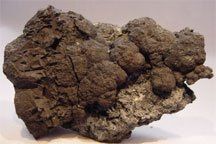BACKGROUND ON ARSENIC
Arsenic is a solid, poisonous, semi-metal element that is odorless and tasteless. It has allotropic (similar) forms; yellow, and several black and gray are mostly seen. Arsenic can be organic (from plants and animals and is non-toxic), or inorganic (from rocks, air, and water, and is toxic). Arsenic binds readily to itself. When arsenic is heated in air it oxidizes and the fumes have a garlic-like odor.
WHY TEST FOR ARSENIC?
If you have a private water source
If you have recently installed a new well
If you have treated wood around your home that children play on
HEALTH CONCERNS
The Environmental Protection Agency (EPA) has set the current limit for arsenic at 10 parts per billion (ppb) for drinking water
Non-cancerous effects include thickening and discoloration of the skin, stomach pain, nausea, vomiting, diarrhea, numbness in hands and feet, partial paralysis and blindness
Arsenic has been linked to cancer of the bladder, lungs, skin, kidney, nasal passages, liver and prostate
SOURCES OF ARSENIC
It can enter drinking water from natural deposits in the earth, from agriculture, industry, forest fires, runoff from orchards, glass and electronic production wastes. It is used in wood preservatives, paints, dyes, metals, drugs, soaps and semi-conductors, certain fertilizers and animal feeding operations, copper smelting, mining, and coal burning operations.
REMEDIES
Install precipitative, adsorption, ion exchange, membrane filtration, or greensand filtration devices (reverse osmosis and distillation systems are
the most often used)
Drill a new well
Connect to a public water system
Buy bottled water
To find the right drinking water treatment unit for your home go to www.nsf.org/Certified/DWTU
See below links for more information

